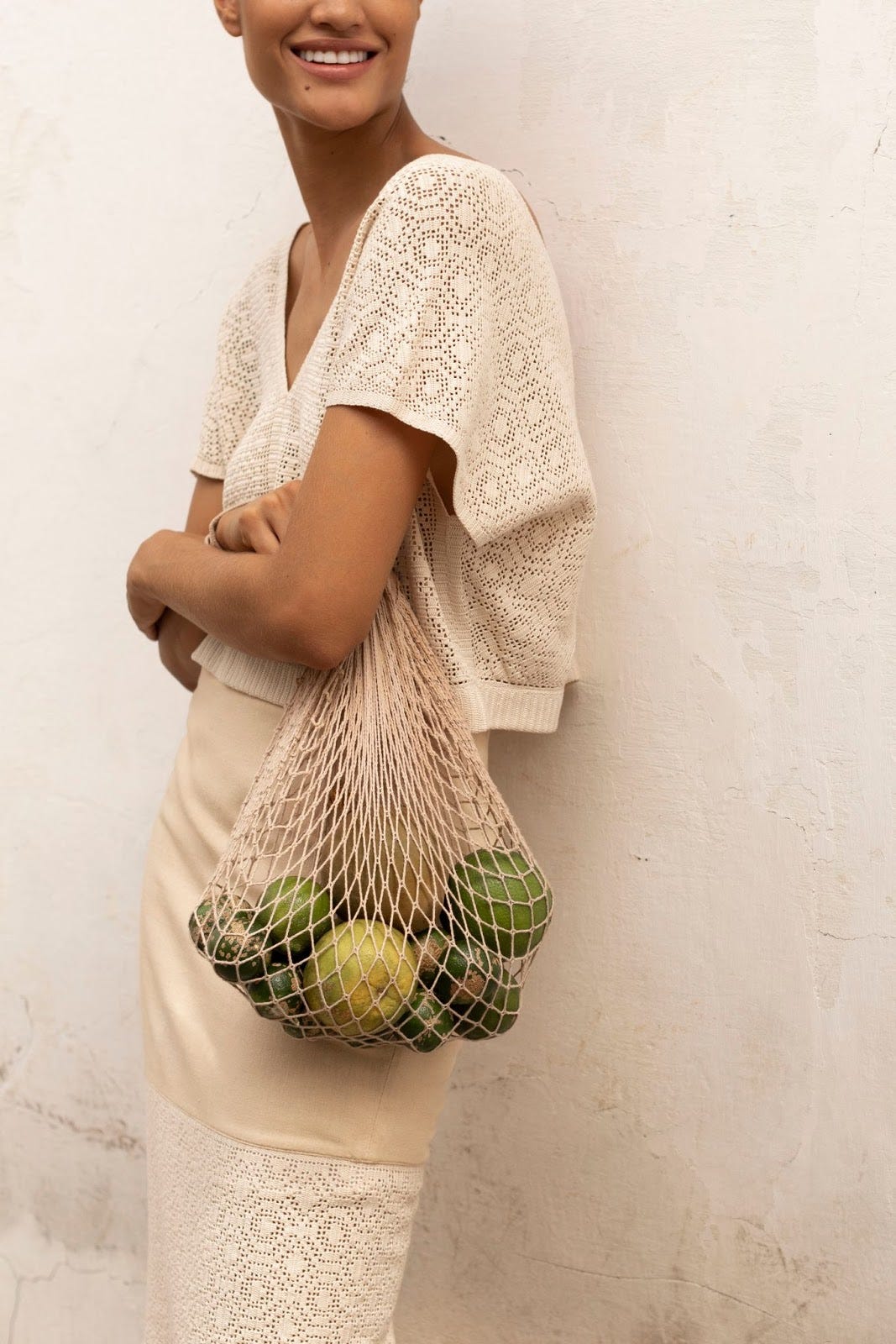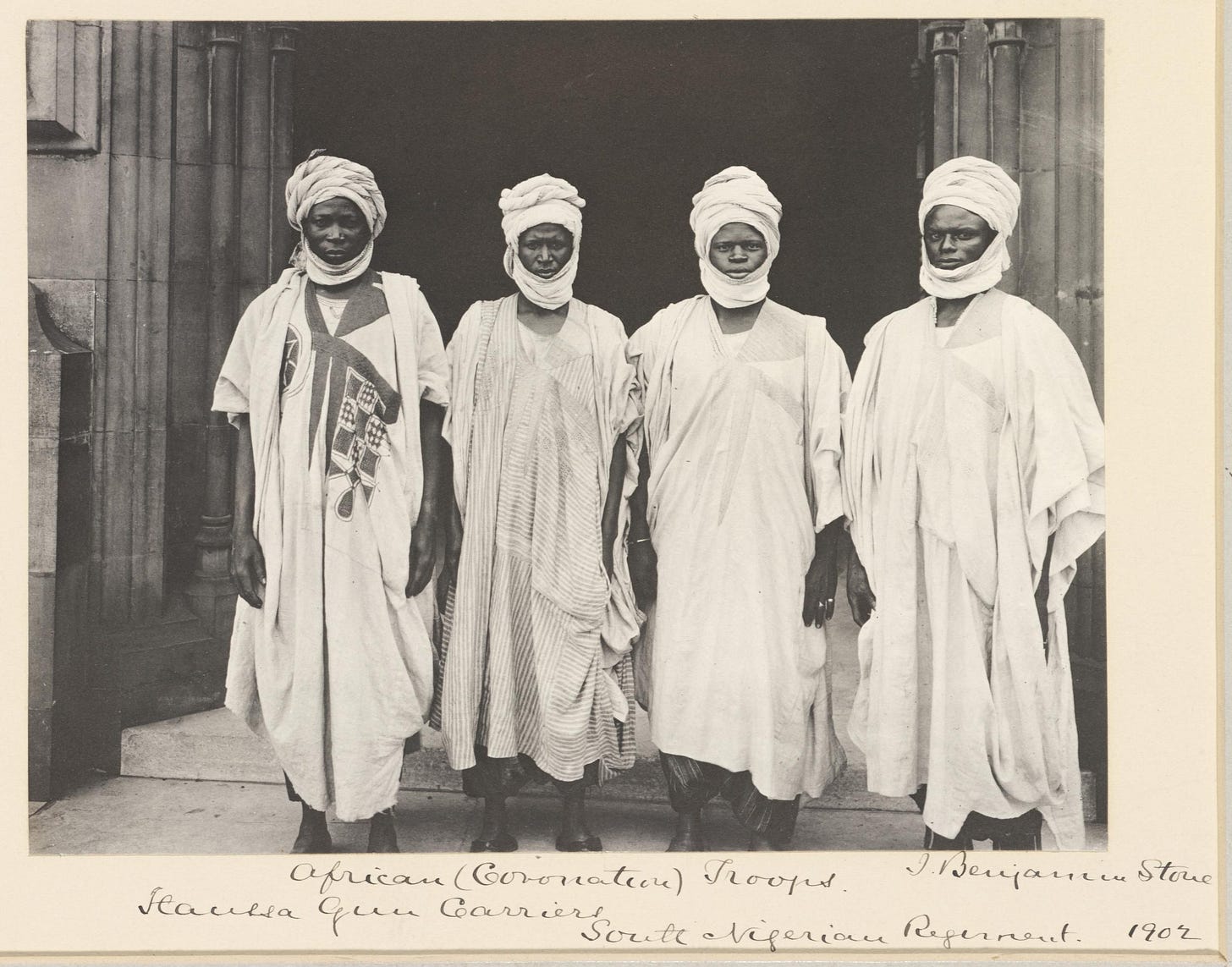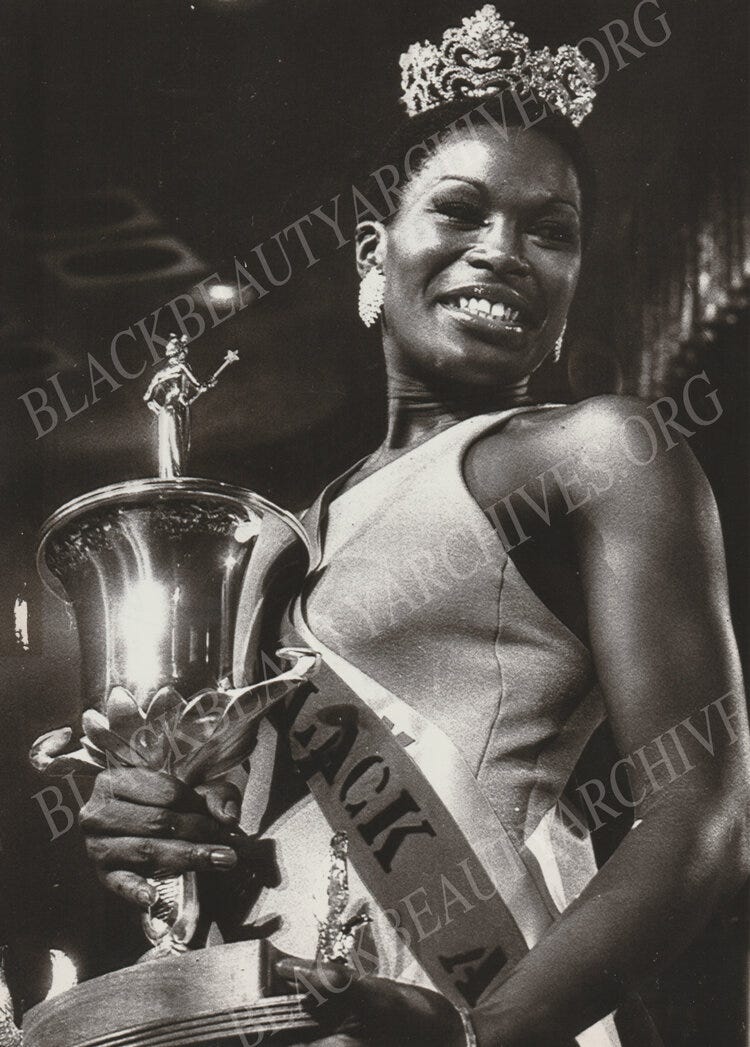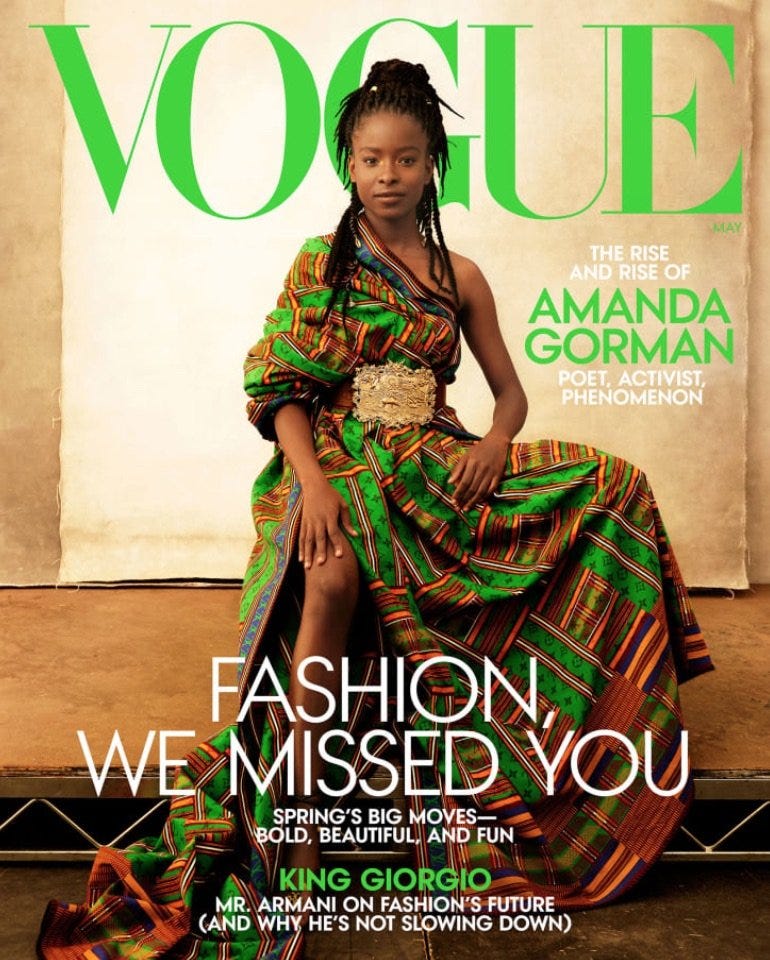The work of building our own table.
The latest in decolonizing fashion, the influence of West African boubou, a Haitian fashion history of one's own and 'In the News' uncovers myriad problems embedded in fashion.
Hello everyone,
I missed sending you a letter last week, due to some of the complexities of being a small operation, but I’m back! I have quite a bit to share with you as a result, and I am very excited to share with you our new section called ‘In the News.’
Guest contributor Anu Lingala has joined us to bring you the latest issues in the headlines, and we go deep to ensure that our readers understand the full context (or even the solutions), which can be found throughout our growing database. I didn’t want to reiterate news headlines with shallow critique or simple summaries, and I knew that Anu was the ideal contributor to bring you thoughtful and thorough analysis. In the News is brought to you by FRD Content Editor Anthony Palliparambil, Jr. alongside myself.
In this week’s letter, you’ll find a reading list on decolonizing fashion by FRD Researcher Laura Beltrán-Rubio, we revisit an object that matters to textile researcher Tayana Fincher, guest contributor Joyce Gayo writes her own Haitian fashion history, and if you are looking for a diverse archive of Black beauty advertisements, we have a Directory spotlight for you. Finally, at the end of this letter, I’m boosting a call for submissions in our Opportunities section that seeks the latest ‘Black Excellence’ in fashion.
In the News: Issue 01, April 23, 2021
A word from our newest contributor and author of In the News, Anu Lingala:
Welcome to the first edition of In the News! This biweekly column will recap recent headlines in the fashion industry that intersect with issues of race. We’ll take a critical look towards current happenings and pull out the threads of connection to broader sociocultural and historical contexts.
We’d like to firstly take a moment to acknowledge the most pivotal news of the week: George Floyd’s murderer receiving three guilty court convictions. The outcome was a rare and historic moment – a hopeful signal of change in a country where, between the years of 2013-2019, only 0.3% of police killings led to a conviction. While we encourage pausing to recognize the impact of our collective action over the past year, it is important to realize there remains a great deal of work to be done. We can each play a role in continuing to advocate for change, as outlined in Deepa Iyer’s Social Change Ecosystem Map.
Here at The Fashion and Race Database, we believe in creating change through sharing knowledge, amplifying diverse perspectives, and challenging dominant narratives. As such, this week, our recap includes discussions of cultural appropriation in design practice, equitable representation in retail, the contradictions of sustainable fashion, expressions of religious identity, and the urgent plight of garment workers.
Check out our very first issue of In the News for the latest headlines on our radar.
‘In the News’ provides a biweekly curated list of the most recent and urgent fashion news and (related) world events, placing those stories in a deeper context that can be further understood by connecting them to relevant sources inside The Fashion and Race Database. Written by Anu Lingala and edited by Anthony Palliparambil, Jr. and Kim Jenkins.
From The Library: Decolonizing Fashion

This week, FRD Researcher Laura Beltrán-Rubio is introducing us to the discourse surrounding the decolonization of fashion, starting with a suggested list of sources that can be found in our library:
The fashion industry was — and still is — built on a colonial model of extraction and exploitation, often at the expense of the environment and human rights. Recent scholarship has called for the reimagining of the system. This requires unlearning what we know about fashion in order to change common understandings of power, reorient metrics of success, and dismantle tokenism, appropriation, and misrepresentation within the fashion system. This reading list offers five perspectives on how to decolonize fashion.
Fashion Revolution — Why the real revolution should be the decolonization of the fashion industry by Amie Berghan (Open Access Article)
A Moment of True Decolonization Episode Nº10: The Exotic Other by Léopold Lambert & A Moment of True Decolonization (Podcast Episode)
Fashion Theory Volume 24, Issue 6: Decoloniality and Fashion by Toby Slade & M. Angela Jansen (Paywall Articles)
Aditi Mayer of Adimay: Decolonizing fashion and going beyond the tokenism of diversity by Green Dreamer Podcast (Podcast Episode)
DECOLONIZING FASHION: Defying the ‘White Man’s Gaze’ by M. Angela Jansen (Open Access Article)
‘The Library’ and the ‘Reading List’ is where we collect and organize countless educational sources all in one place. Referenced by educators, students, fashion enthusiasts and curious minds, this multi-faceted repository provides an expanding selection of tools for learning about all matters connected to fashion, appearance, power and the impact of ‘race.’
Objects That Matter: West African Boubou

The database team has been re-introducing some powerful pieces from our Objects That Matter section, and we were grateful to have researcher Tayana Fincher write about the West African boubou and draw connections to its influence in popular retail. Tayana’s research “analyzes continuity and pluralism in the diaspora arts of African and Islamic regions.”
Imbued with symbolic meaning, the boubou originated among West African indigenous groups in the eighth century, and most likely increased in use and popularity with the rise of Islamic empires starting in the eleventh century. [...] With Islamic empires gaining control of the region especially after the fifteenth century, Muslim clothing, such as the kaftan, became synonymous with power and led to derivative styles now worn by men and women of various faiths.
'Objects That Matter' gathers numerous fashion objects outside of the Western lens and provides a brief history, showing why they matter, as many of these items have been widely appropriated or referenced.
Our Fashion History: ‘Les Femmes de la Perle des Antilles’ (‘Women of the Pearl’)

As we continue to revisit some of our favorite content, guest contributor Joyce Gayo reflects on fashion history through photos of her mother, Dr. Juniace Senechales Etienne, a migrant worker turned college professor.
Describing this photograph of her mother, seen on the far right alongside other family members, Gayo writes:
My mother recalls that day with joy and excitement: 'We were on our way to a wedding. We felt beautiful and glamorous.' My mother believes that fashion blocks away one’s pain: 'No one needs to know that your food pantry’s empty.' Yet she knew the risks of expressing her taste for fashion.
Read on about ‘Women of the Pearl,’ as Joyce joins us in expanding the narrative of what fashion history looks like.
'Our Fashion History' shares stories from contributors' photo albums in effort to expand the narrative and visual landscape of fashion history.
The Directory: Black Beauty Archives

From the Black Beauty Archives:
Curated from the hearts and minds of Black women, the Black Beauty Archives encompasses the history of our past, documents the present while imagining the future. Our mission is to preserve, document and celebrate the history of Black Beauty through cosmetics and beauty culture.
Objects include rare vintage beauty ads, magazines, press photos, stamps and beauty tools. Exclusive oral histories from beauty professionals and creatives alike are added to our collection on a bimonthly basis. BBA will continue to add to these collections, expanding our archival holdings to reflect the dynamic aesthetics of Black Beauty.
Languages: Collection material in English.
Chronological Focus: 1950 to present. Materials prior to 1950 are collected in relation to their relevance to the Black Beauty Archive in preserving Black Beauty Culture.
Acquisition Information: Since the project began on Juneteenth 2020, items have been added to the collection on a weekly basis and will continue to be added as they are identified.
Learn more about the Black Beauty Archives project and how you can support them by visiting their profile on our Directory page.
The discourse on fashion and race threads through a vast network of like-minded endeavors. ‘The Directory’ catalogues other sources of information and inspiration.
Opportunities: The Black Excellence Prize (deadline May 17, 2021)
From F.A.C.E. (Fashion Academics Creating Equality):
FACE members have been working with the Graduate Fashion Foundation to create the Black Excellence Prize. Our aim from the start has been to amplify Black creativity as a broad and limitless possibility and inspire all young Black and Brown creatives to find belonging in a prize that recognises their unique contribution to style, culture, fashion and society.
Eligibility: Open to all Black and Brown final year students in any BA fashion related course in the UK that could include but is not limited to journalism, marketing, photography, communication, fashion design, textile design, hair and make-up design, styling, creative direction.
To learn more about this unique prize, visit the page in our Opportunities section.
A global network of events, conversations and opportunities will continue to evolve the discourse on fashion and race. ‘Opportunities’ remains on the pulse and keeps you looped in.
That’s it for now. Please stay safe and we’ll see you next week.
Yours in service and solidarity,
Kim Jenkins
The Fashion and Race Database Team: Rachel Kinnard, Daniela Hernandez, Kai Marcel, Laura Beltrán-Rubio and Anthony Palliparambil, Jr.





